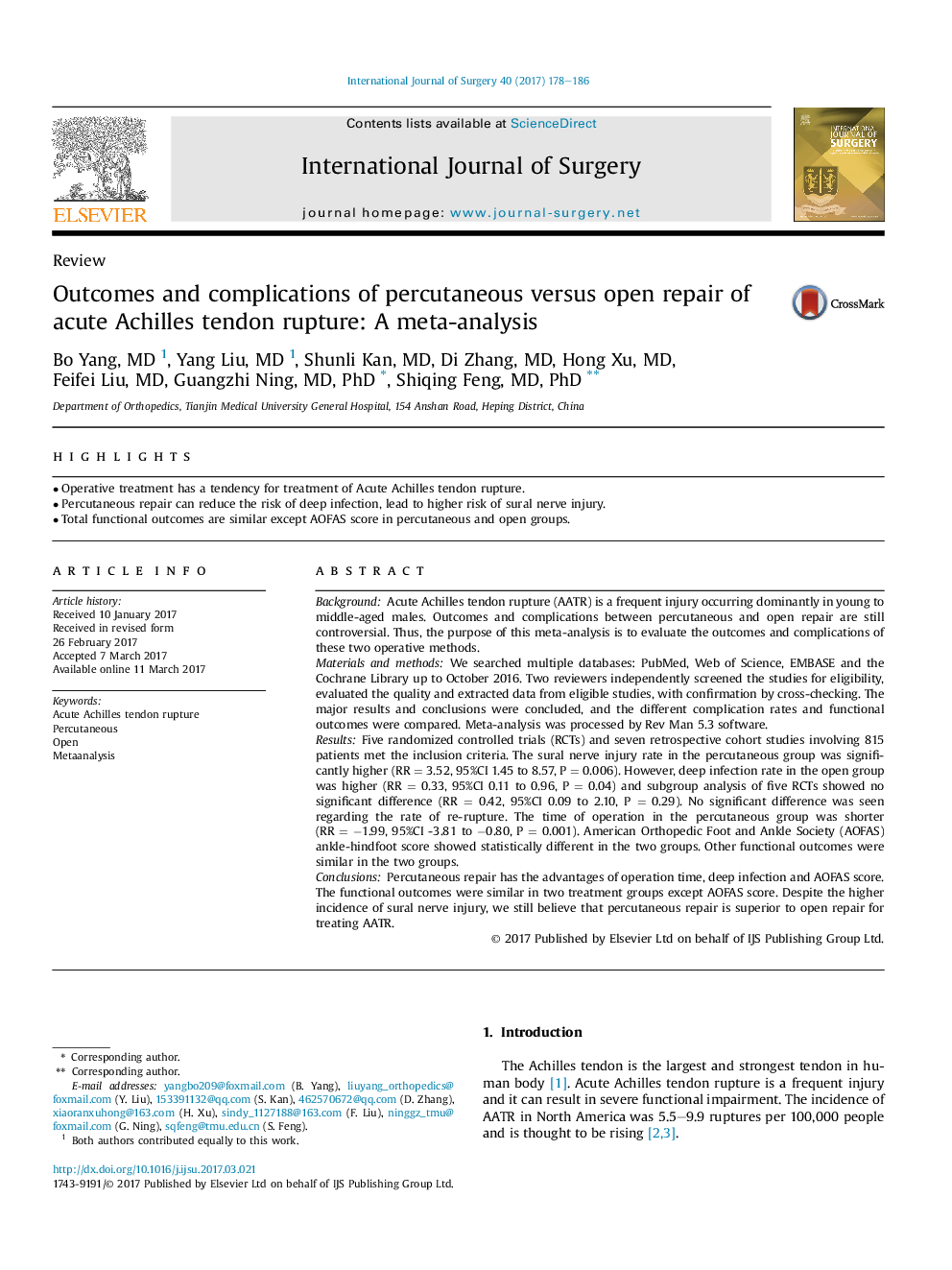| Article ID | Journal | Published Year | Pages | File Type |
|---|---|---|---|---|
| 5732273 | International Journal of Surgery | 2017 | 9 Pages |
â¢Operative treatment has a tendency for treatment of Acute Achilles tendon rupture.â¢Percutaneous repair can reduce the risk of deep infection, lead to higher risk of sural nerve injury.â¢Total functional outcomes are similar except AOFAS score in percutaneous and open groups.
BackgroundAcute Achilles tendon rupture (AATR) is a frequent injury occurring dominantly in young to middle-aged males. Outcomes and complications between percutaneous and open repair are still controversial. Thus, the purpose of this meta-analysis is to evaluate the outcomes and complications of these two operative methods.Materials and methodsWe searched multiple databases: PubMed, Web of Science, EMBASE and the Cochrane Library up to October 2016. Two reviewers independently screened the studies for eligibility, evaluated the quality and extracted data from eligible studies, with confirmation by cross-checking. The major results and conclusions were concluded, and the different complication rates and functional outcomes were compared. Meta-analysis was processed by Rev Man 5.3 software.ResultsFive randomized controlled trials (RCTs) and seven retrospective cohort studies involving 815 patients met the inclusion criteria. The sural nerve injury rate in the percutaneous group was significantly higher (RR = 3.52, 95%CI 1.45 to 8.57, P = 0.006). However, deep infection rate in the open group was higher (RR = 0.33, 95%CI 0.11 to 0.96, P = 0.04) and subgroup analysis of five RCTs showed no significant difference (RR = 0.42, 95%CI 0.09 to 2.10, P = 0.29). No significant difference was seen regarding the rate of re-rupture. The time of operation in the percutaneous group was shorter (RR = â1.99, 95%CI -3.81 to â0.80, P = 0.001). American Orthopedic Foot and Ankle Society (AOFAS) ankle-hindfoot score showed statistically different in the two groups. Other functional outcomes were similar in the two groups.ConclusionsPercutaneous repair has the advantages of operation time, deep infection and AOFAS score. The functional outcomes were similar in two treatment groups except AOFAS score. Despite the higher incidence of sural nerve injury, we still believe that percutaneous repair is superior to open repair for treating AATR.
